Table of Contents (click to expand)
There is little conclusive evidence that the elbow is better to sneeze into than the hands, but it makes sense. Considering that our hands touch many more surfaces compared to the inner elbow, it might be better better to sneeze into the inner elbow to prevent the spread of potential pathogens. Either way, wash your hands and stay safe!
When you need to sneeze,
You better dab and catch,
To help prevent the spread of disease.
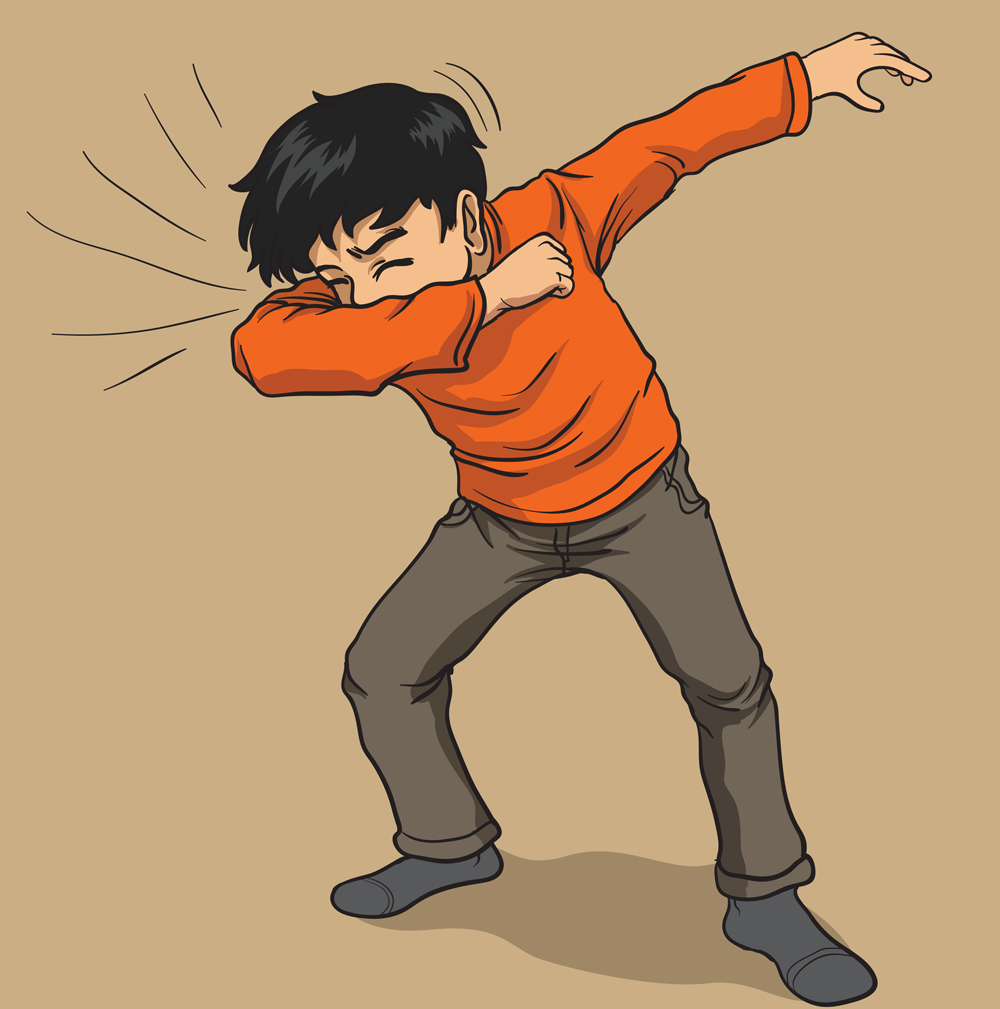
As your nose scrunches and your face contorts, your palms rise of their own accord, slowly coming together to form a cup that covers your mouth and nose… ACHOOO!
Congratulations! Your palms now contain the germ – and mucus-filled droplets that have been released from your nose!
On any random day in your life (sometime before 2020), you may have simply wiped your hands off on your jeans, used a tissue, or ran your hands under water and forgotten all about the sneeze. However, with the memories of a still raging pandemic etched firmly in our brain, the thought of a messy sneeze probably sends shivers down your spine!
What you hold in your hands and your actions thereafter determine whether you spread a disease currently ravaging the world or help in its prevention. You should now take those palms, while still clasped together and run to a washroom, sing ‘Happy Birthday’ and scrub your hands clean for a solid 20 seconds.
TASK! INCONVENIENCE! And a WASTE of 20 precious seconds!
Fear not! If you don’t have a mask or handkerchief handy, and need to sneeze, just use your elbow instead. Forget the handshakes and cupped palms, it’s time to elbow bump and elbow dab. However, the question then becomes, are elbows really better than our hands? If yes, then why? The answer lies in two things…
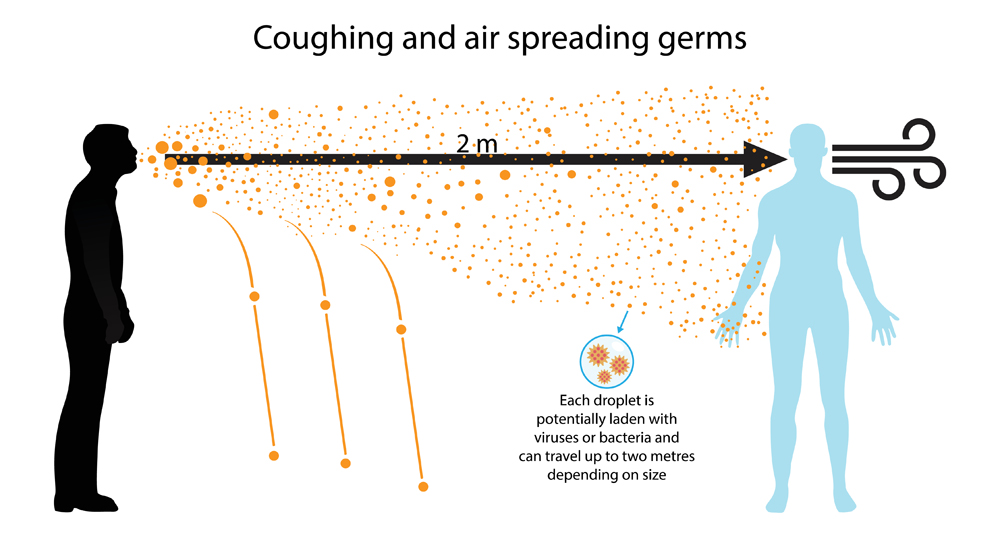
1- Fluid Dynamics
When we sneeze or cough, droplets of various sizes are released from our mouths.
Think of it as dipping a brush in paint and then flicking it forward with tremendous force.
If you were to do this in a stark white room, you would notice a scattered pattern staining the walls and floor. Now, replace those paint droplets with teeny-tiny mucous, water, and irritant-filled particles. Now you know what your sneeze looks like!
Scientifically, the action of sneezing is considered a violent release of air from the lungs that causes phasing disturbances in the natural flow of air, similar to the act of dropping a stone in water.
There are two parts to this release: 1) a cloud of buoyant hot moist air; and 2) multi-size droplets suspended in and around the cloud that contain disease-spreading things called pathogens. To understand how this plays a role in disease transmission, we need to look at fluid dynamics.
Fluid Dynamics is a concept in physics that deals with the movement of anything that flows, such as air and water, as well as all their interactions. The ideal shape for the hull of a boat or the pointed nose of an airplane is based on the principles of fluid dynamics. This knowledge is essential to ensure the smooth movement of such vehicles.
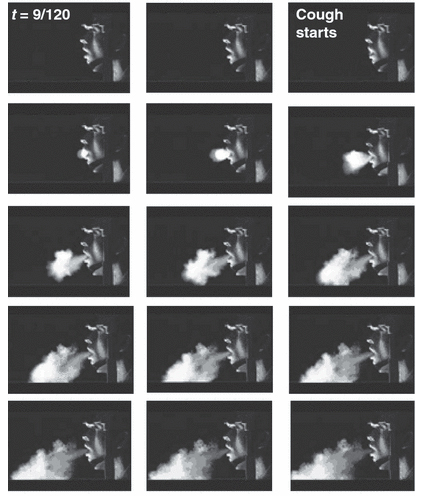
Now, going back to our droplets and the “moist cloud”, their movement can also be analyzed using fluid dynamics. The heavier droplets, which have many more pathogens, fall much closer to the person due to gravity, and remain suspended in the air for less time.
Aerosols
The smaller droplets and those in the cloud gradually lose moisture and become something known as aerosols. The aerosols can remain suspended in the air long enough to be carried far and wide, particularly when aided with drafts of air.
Think of it as spraying air freshener in one corner of the room. The smell spreads far and wide as a result of diffusion, despite its narrow release point. If these pathogen-carrying aerosols get into ventilation systems, for example, they can easily be circulated through the system.
That being said, some evidence argues that aerosols do not carry enough pathogens to cause disease.
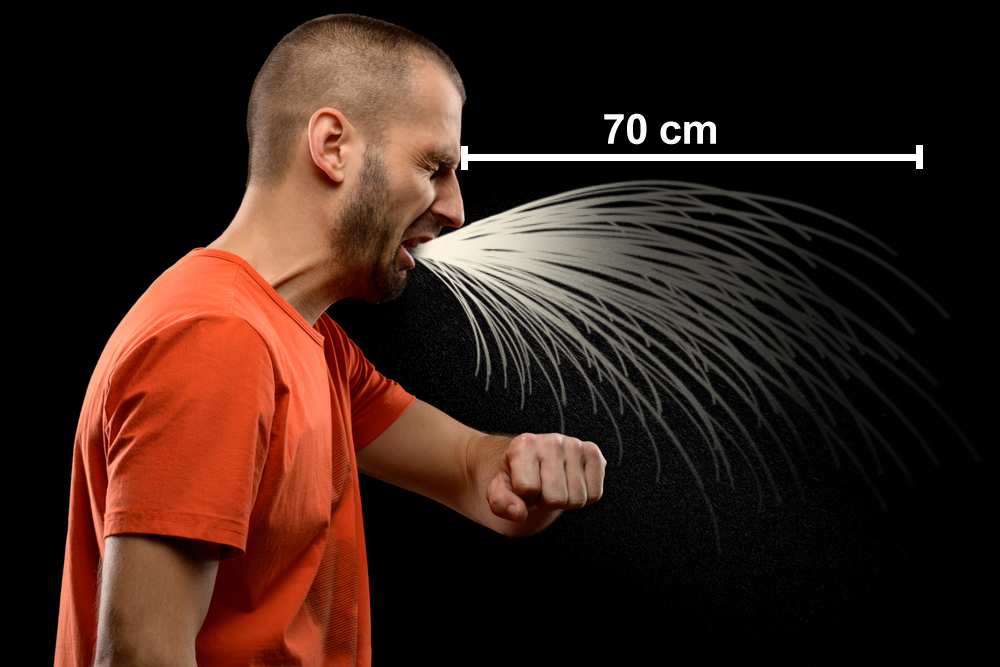
The size and quantity of droplets produced differ greatly depending on whether one coughs or sneezes. Sneezing generates around a million droplets, whereas coughing generates only a few thousand. As the size is dependent on the pressure in the lungs, the action of sneezing produces a much larger proportion of small-sized droplets, while coughing produces a varied range of sizes.
Does The Size Of Aerosols Matter?
The debate on this is also ongoing. Some papers state that aerosols can travel deep into our airways and cause disease. Others disagree, saying that aerosols could not potentially carry a load large enough to cause disease. The former papers also state that disease caused by aerosols requires a smaller amount of aerosol particles to be ingested, in comparison to touching your nose directly.
Recent studies have shown that aerosols generated from coughing and sneezing can cause diseases such as T.B., measles, and others, adding weight to the first opinion.
Also Read: Why Should You Always Cover Your Mouth When You Sneeze?
2- Behavioral Habits
Humans are creatures of habit. When we sneeze or cough, we seem to instinctively use our hands.
If you ponder over your own actions, how often have you considered every surface that your hands touch after sneezing or coughing? We use our hands for countless things every day. Knowingly or unknowingly, we touch things around us, hold onto railings, and press buttons, just to name a few of the most common and easily overlooked surfaces.
The droplets present on our hands can then be transferred to these surfaces. The next person who touches these spots will potentially expose themselves to the pathogen and could then transmit it to others. The inner elbow, in contrast, doesn’t do much more than exist as the inner elbow!
Thus, changing our habits to sneezing into our elbow could reduce indirect disease transmission.
Also Read: Is It Possible To Prevent A Sneeze By Placing Your Hands Under Nose?
Can The Elbow Contain Those Pesky Aerosols?
While we’ve dealt with a simple method to curb indirect transmission through our hands, the control of aerosols remains the deadly elephant in the room. Two Indian scientists conducted a study to understand just how far these droplets can spread, and if using masks or elbows truly has any effect.
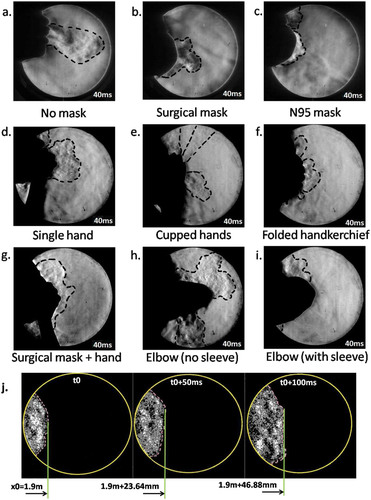
The study revealed glaringly apparent differences in how far the cloud could travel. As can be seen in the image above, directly coughing causes a giant cloud that can travel up to 3 meters away from the person. N95 masks, on the other hand, provide the best protection, reducing this range to only 0.25 meters. Using a covered elbow in comparison to using clasped hands provides a very good amount of protection.
The difference is enough to put the covered elbow second best only to the N95 mask. The difference in the distance that the cloud containing aerosols travels can be accounted for by a reduction in the velocity with which the sneeze or cough is released from the mouth.
So, the answer to the original question posed in this article would be a resounding YES. The elbow (a covered one) does indeed contain many of those pesky aerosols.
However, cough etiquette (yes, that’s a thing) hasn’t been researched enough for us to confidently determine whether one is better than the other. The papers discussed above contain information from a small sample size; large-scale testing is required for definitive conclusions.
Factors of humidity, temperature, and pressure playing active roles in transmission would alter the above results. Nonetheless, the simple action of sneezing into one’s elbow prevents most contact spread of the pathogen and leads to the lowering of infection rates.
So, at the end of the day, until we have further evidence in the battle between the inner elbow and your palms, you can determine your own method. Just remember to wear a mask and wash your hands should you use them, or simply sneeze into your inner elbow and go on with your day!

How well do you understand the article above!

References (click to expand)
- Fluid Mechanics - an overview | ScienceDirect Topics. ScienceDirect
- Fluid dynamics definition and meaning - Collins Dictionary. The Collins English Dictionary
- Zayas, G., Chiang, M. C., Wong, E., MacDonald, F., Lange, C. F., Senthilselvan, A., & King, M. (2013, September 8). Effectiveness of cough etiquette maneuvers in disrupting the chain of transmission of infectious respiratory diseases. BMC Public Health. Springer Science and Business Media LLC.
- WELLS, W. F. (1934, November). On Air-Borne Infection*. American Journal of Epidemiology. Oxford University Press (OUP).
- Bourouiba, L., Dehandschoewercker, E., & Bush, J. W. M. (2014, March 24). Violent expiratory events: on coughing and sneezing. Journal of Fluid Mechanics. Cambridge University Press (CUP).
- Yang, W., & Marr, L. C. (2011, June 24). Dynamics of Airborne Influenza A Viruses Indoors and Dependence on Humidity. (R. A. M. Fouchier, Ed.), PLoS ONE. Public Library of Science (PLoS).
- Asadi, S., Wexler, A. S., Cappa, C. D., Barreda, S., Bouvier, N. M., & Ristenpart, W. D. (2019, February 20). Aerosol emission and superemission during human speech increase with voice loudness. Scientific Reports. Springer Science and Business Media LLC.
- Prasanna Simha, P., & Mohan Rao, P. S. (2020, August 1). Universal trends in human cough airflows at large distances. Physics of Fluids. AIP Publishing.
